Refine by Region
Refine by Art Form
Refine by School Level
100 Year History Project – Children as researchers
The 100-year history project is a creative commemoration project, engaging children and teachers from 10 schools in Ireland and Northern Ireland with the Decade of Commemorations, through research and creative activity alongside a professional artist and writer. The project is phased to encompass child-led research, exploring the wider political events of the decade 1912-22 through the lens of local and family histories.
The 100 Year History publication will be launched in September 2016.
The project aims to:
- Support a way of working that involves children as action researchers within their own communities and that recognises the value of the arts for breaking down cultural barrier.
- Make a unique commemorative book publication to provide a legacy that promotes children’s inclusion in commemorations, and the power of the child’s voice to challenge the perceptions of adults.
- Engage children with the decade of commemorations through child-led research and creative activity alongside a professional artist and writer.
- Challenge received myths and perceptions around historical events from 1912-22, and break the culture of silence surrounding these events.
Who was involved?
The project is managed and led by Kids’ Own Publishing Partnership, in conjunction with the Kilkenny Education Centre, Blackrock Education Centre, Dublin West Education Centre, Limerick Education Centre, and the Belfast Education and Library Board. For 10 primary schools North and South of Ireland with artist Ann Donnelly and writer Mary Branley. The project is funded by The Department of Foreign Affairs Reconciliation Fund.
The 12 primary schools included;
- Northampton National School, Kinvara, Co. Galway
- Laghey Primary School, Dungannon, Co. Tyrone
- Inchicore National School, Dublin 10
- Hazelwood Integrated PS, Belfast
- Lisnafunchin National School, Castlecomer, Co. Kilkenny
- Gaelscoil na Bhfál, Falls Road, Belfast
- Nicker National School, Old Pallas, Co. Limerick
- Holy Rosary Primary School, Belfast
- St Joseph’s Boys National School, Carrickmacross, Co. Monaghan
- St Brigid’s National School, Dublin 4
How did you begin?
Phase one of the project began with an initial teacher meeting, with teachers from schools, north and south, artist Ann Donnelly & writer Mary Branley, representatives from the partner organisations. The aim of the meeting was to provide a space for teachers participating in the project to come together to begin to discuss and plan the project.
The feedback from the teachers on the day reflected both their excitement about the project, as well as their fears and concerns, in terms of supporting the children through a research process while being mindful of the political sensibilities involved;
“Only British history is taught to the pupils in my school. I am excited to teach the children some history about Northern Ireland, especially within their own locality. Children learn a lot of British history but have never visited the settings of these historical events. By learning about local history the children can compare now and then.”
“There was a positive sense of schools working as part of a group, with help from writer and artist.”
“Rich historic surroundings around our school in Inchicore/ Kilmainham. I am excited and enthusiastic about beginning the project and exploring, 1. How the children interpret these events explored, and 2. How it can be linked to personal/ local history, and also how it can be compared to their experiences of the world today – perspective of an innocent eye.”
How were the ideas developed and how did the young people, artist and teacher work together?
This work is not just about the facts and stories that have been uncovered, although some of these are full of interest and worth: above all, the project needed to be child-led. This approach has required a huge amount of resourcefulness from all concerned, as often the material doesn’t exist in a form that is easily accessible, particularly for younger children or those with English as a second language. The role of the writer and artist was in supporting children and teachers in their research, encouraging them to dig deeper into local and family history.
Writer Mary Branley
The actual historical knowledge the children researched through different means and sources. In two schools so far the entire class focused on place related incidents, i.e. The Lockout of 1913 in Haddington Rd Dublin, The Clones Shooting in 1922 (in which the newly established border plays a big part), and the arrival of the Belgian Refugees in Monaghan, Carrickmacross. In preparing these stories for publication, children, teacher, artist and writer worked together to tell the story orally, writer transcribed, we revisited the story for accuracy, completeness, further details and context. Once agreement had been reached on the written story, the children selected the images or aspects of the story they wanted to illustrate. This kind of collective working meant both a higher level of knowledge was attained, and shared, and that a high level of ownership of both text and illustrations was reached. The role of the adults was to support the children in their line of inquiry, rather than leading the children in any particular direction.
Pupil from St Joseph’s Boys’ National School, Carrickmacross
“There has been a lot of work researching, searching the internet and books and doing drawings. But it should be spectacular at the end to see what other kids have done”.
Pupils from Gaelscoil na Bhfál, Belfast
“We walked from school to City Cemetery up the Falls Road. It took us five minutes. It’s a very old cemetery. We saw graves from 1789. We first had to go big gates with statues on either side of the wall, we followed the trail to find the graves.
The highlight of our day was climbing through bushes to find what graves there were. Someone leaned over to pull the ivy vines away from the headstone. We saw a grave over 200 years old.
We also found the grave of Viscount Perrie’s. He was in charge of Harland and Wolf during the building of the Titanic”.
What aspects of the project made you smile? What aspects of the project made you feel challenged?
Artist Ann Donnelly
The children’s enthusiasm was exciting in every school, I loved seeing real objects and photos, these really brought things to life for me. Or hearing about something that happened just around the corner, amazing stories and ideas. Louis from Kilkenny discovered from visiting historian that his great aunt was the first woman to drive an armoured car. Children in the Limerick class told me about rebel ambushes a few fields away and about great aunts who were shot as German informers near Lublin in Poland. I was challenged to ensure that these amazing little stories did not get swept away in a big important narrative strand.
Writer Mary Branley
School visits are always exciting and it’s a privilege to be welcomed wherever we have gone. It was a delight to meet individual children who had found out about the lives of their great great grandparents, or other family members, and conveyed their amazement in looking at artefacts, like photos, letters from the trenches in World War 1 and even a beautifully boxed deck of playing cards. It made history come alive to make connections with family members, in some cases with the same names as themselves and clear family resemblances.
The sensitivity of the history itself, both of the formation of the Republic of Ireland and the creation of Northern Ireland challenged us. As one teacher explained it “History is not just fact, but perspectives on the same stories, depending on your sources. Then there are opinions and judgments on the facts which we are living with to this day. It’s not easy for children to understand this, but their perspectives are also part of the learning process.” We need to be aware of the pitfalls of simple jingoistic narratives that essentially continue the status quo, and never go deeper into the complexities of issues that might challenge us, and lead us to question our mono cultural perspectives. But there has never been a better time to investigate the past, with so many and varied sources now available.
Teacher Linda O’Sullivan
“I feel that children have developed a wonderful sense of how history can leap off the page and come alive for them from this project”.
What insights from the project are worth sharing?
Writer Mary Branley
Winston Churchill famously described history, as “just one damn thing after another.” This is both true and very misleading. Facts are facts, but they don’t exist by themselves, such as neat little sums,like 2+2=4. There are causes, consequences, terrible events, and further reprisals in an ongoing saga of power and politics. Then there are the ordinary people caught up in battles for equality, rights, justice and the wish to lead a peaceful life. This can be a daunting task for children to negotiate. But how worthwhile to allow children to connect with and make sense of the past.
Pupil from St Joseph’s Boys’ National School, Carrickmacross
“My Grandad has a chest of stuff about PJ Cassidy. I felt excited because someone in our family was in such a big event and I had real thing from 100 years ago to show the boys in the class”.
Spotlight
Artist(s):
Mary Branley has been a writer and facilitator with Kids’ Own since 2001. Recent book projects include the 100-year history project (2016), The Kindness Project (2015) the Transition Project (2014), supporting young children in the transition to primary school and Through the Eyes of Traveller Children (2014) with Traveller children from Dungarvan. In 2015 she was awarded an Arts Council Young People, Children & Education Bursary. In 2013, Rebellion in the Village, a collaboration between Mary and 11 and 12 year old Sligo school children was the first novel to be published by Kids’ Own.
Ann Donnelly is a Northern Irish artist working mainly with video and photography, often in response to a sense of place. In both solo practice and collaborative projects, she explores themes of being and belonging and her work has been exhibited internationally.
Teacher(s):
David Burgess - Hazelwood Integrated Primary School, Belfast
Sarah Campbell - Holy Rosary Primary School, Belfast
Siobhán Coleman - Laghey Primary School, Dungannon, Co. Tyrone
Conor Doyle - Lisnafunchin National School, Castlecomer, Co. Kilkenny
Una-Meabh Herron - Gaelscoil na Bhfal, Belfast
Gemma Kenny - Inchicore National School, Dublin 8
Natalie Leydon - St Brigid's NS, Haddington Road, Dublin 4
Bernie McCarron - Hazelwood Integrated Primary School, Belfast
Shane McDonagh - Northampton NS, Kinvara, Co. Galway
Catherine McParland - Gaelscoil na Bhfal, Belfast
Linda O'Sullivan - St Joseph's Boys NS, Carrickmacross, Co. Monaghan
Other:
(Curator, agency, etc):
Kids' Own Publishing Partnership
Kids’ Own is a children’s arts organisation and publishing house dedicated to providing opportunities for children to develop their own individual creative expression through collaborative artistic processes alongside professional artists. Kids’ Own’s vision is for a society that truly values the arts in the lives of all children and recognises children as strong readers, writers, thinkers and creators; and its mission is to promote and make visible the innate creative capabilities of all children in Ireland.
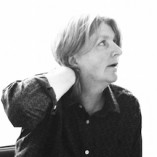
Artist(s)
Mary Branley
Ann Donnelly

Teacher(s)
Conor Doyle
Shane McDonagh
Bernie McCarron
Una-Meabh Herron
Artforms
School Level
School/
Participant Group
St Joseph’s Boys NS, Carrickmacross, Co. Monaghan, Northhampton NS, Kinvara, Co. Galway, Hazelwood Integrated Primary School, Belfast, Gaelscoil na Bhfal, Belfast
No. Participants
250 children (10 schools)
Region
Age/Class
7-12 years, 3rd-6th Class (P4-P7)
Dates
October 2014 - Sept 2016
Weblinks
Leading Agency
Kids’ Own Publishing Partnership
Other Partners and/or Funders
Department of Foreign Affairs Reconciliation Fund
"History is not just fact, but perspectives on the same stories, depending on your sources. Then there are opinions and judgments on the facts which we are living with to this day. It's not easy for children to understand this, but their perspectives are also part of the learning process."
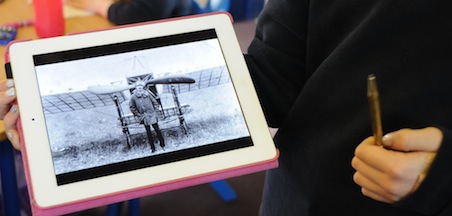
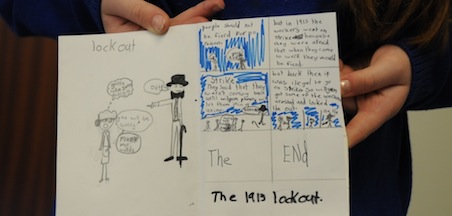



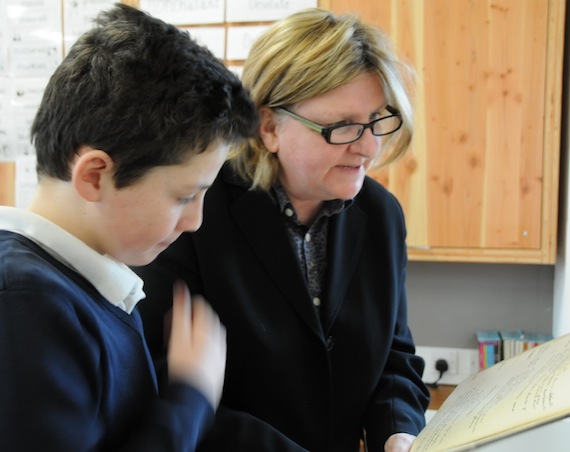
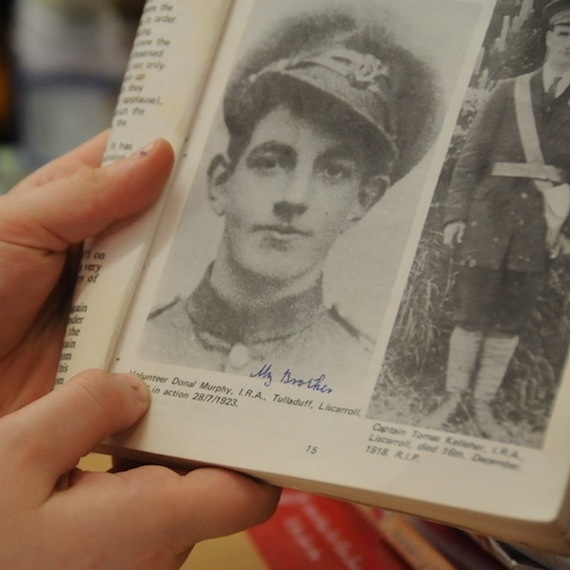
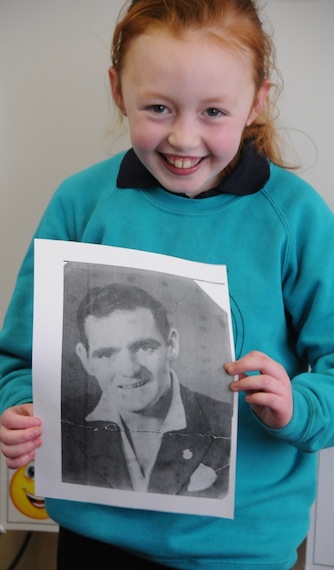
Similar Projects

Virtually There
Artist Vanya Lambrecht Ward collaborates with children from Ardfert National School, Tralee, via video conferencing technology.